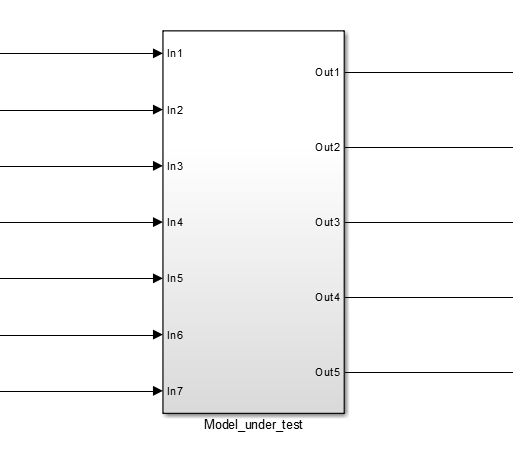Open-Loop Testing
Open-loop tests play an essential role in embedded software quality assurance. The system under test (SUT) is validated isolated and therefore independently of its environment. Therefore, many properties of the system can be tested without being biased by potential malfunctions of surrounding components.
In a manually configured model-in-the-loop testing environment, Open-loop testing often involves many steps. First, the system must be isolated or copied into a new model, then, suitable blocks for stimulation must be inserted and so forth.
Arttest automates all these steps for you. Simply load your model into Arttest, select the system you want to test and start formulating your test cases. Test execution and evaluation are automated as well.

Signals
In an open-loop test, a system is simulated on predefined input signals and parameters/calibratables. During test execution, all relevant signals (in case of a black-box test, its outputs) need to be captured and evaluated.
Arttest allows you to conveniently specify both the input signals for stimulation and the reference curves that reflect the expected signals at the SUT's outputs.
Events
Events Both the system stimulation and the evaluation can be formulated with respect to events. Any valid MATLAB expression can be used as an event trigger, which gives the tester a very high degree of flexibility. We call this type of testing reactive testing since the test case reacts on these events with alternative signal curves.
Model Interface Analysis and Test Harness Generation
Arttest automatically analyses the model and generates a suitable Test Harness (sometimes referred to as testbed) for you that reflects the interface of the model. Your open-loop test scenarios can directly use this interface with the original port names in Arttest.